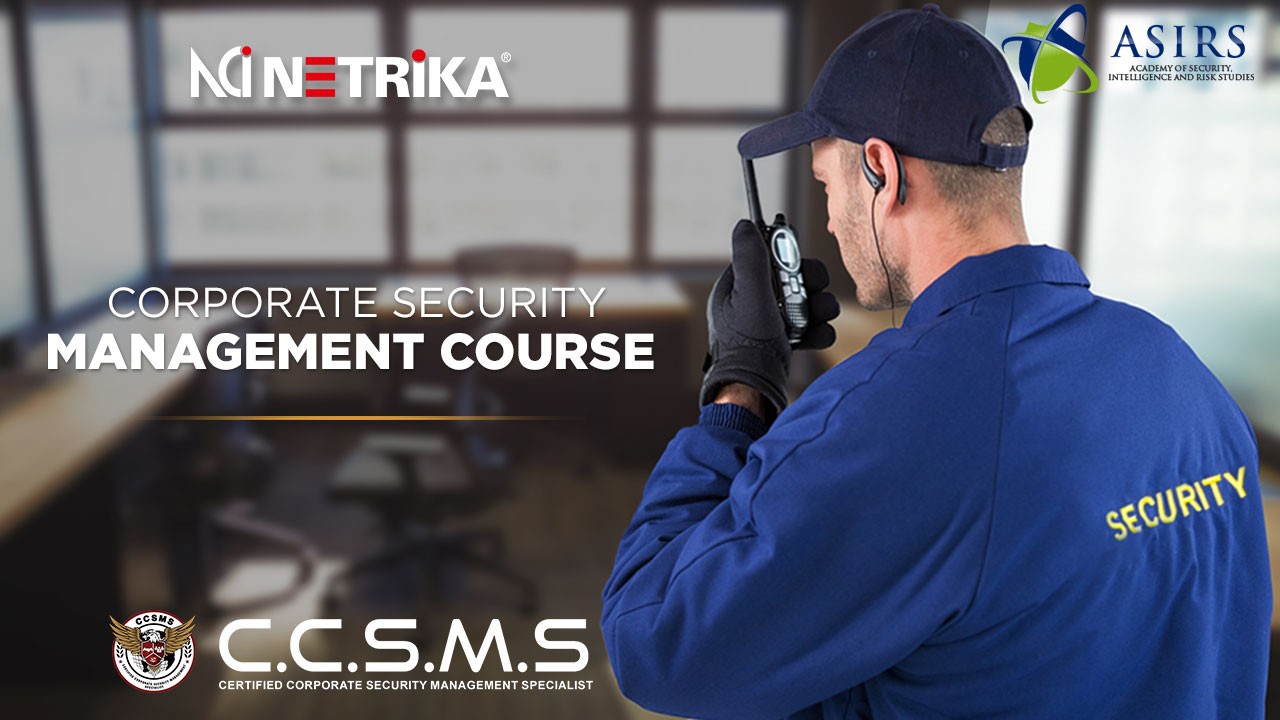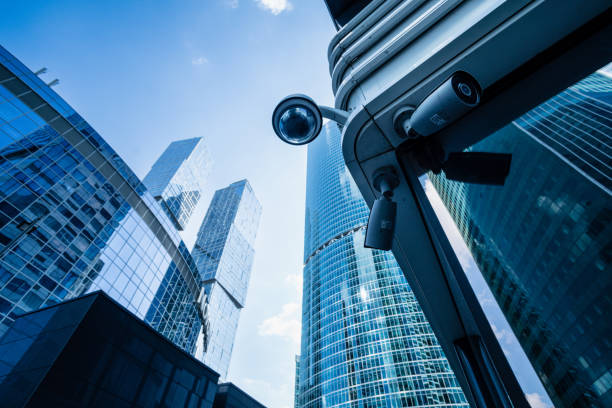Browsing the World of Corporate Security: Trick Insights and Best Practices
Browsing the World of Corporate Security: Trick Insights and Best Practices
Blog Article
From Cybersecurity to Physical Measures: Reinforcing Company Protection in an Altering Globe
In today's quickly evolving electronic landscape, the importance of company safety and security can not be overemphasized. As cyber dangers become progressively sophisticated and common, companies need to go beyond standard cybersecurity actions to secure their assets and procedures - corporate security. This is where the assimilation of physical safety actions comes to be vital. By combining the toughness of both cybersecurity and physical safety and security, business can develop a detailed protection technique that addresses the varied series of threats they deal with. In this discussion, we will check out the transforming threat landscape, the need to incorporate cybersecurity and physical security, the implementation of multi-factor authentication steps, the significance of employee recognition and training, and the adjustment of security actions for remote workforces. By taking a look at these crucial locations, we will certainly acquire important insights into how companies can enhance their business safety in an ever-changing globe.
Comprehending the Changing Danger Landscape
The developing nature of the modern world necessitates a comprehensive understanding of the altering risk landscape for effective business protection. It is important for companies to remain notified and adjust their security determines to deal with these advancing threats.
One secret element of understanding the altering danger landscape is identifying the various kinds of risks that companies face. Cybercriminals are regularly developing new methods to make use of vulnerabilities in computer systems and networks. These dangers can vary from malware and ransomware attacks to phishing rip-offs and social design tactics. Additionally, physical threats such as theft, vandalism, and corporate espionage remain common problems for organizations.
Monitoring and assessing the threat landscape is important in order to determine potential threats and susceptabilities. This entails remaining upgraded on the most recent cybersecurity patterns, analyzing danger knowledge reports, and conducting normal danger analyses. By comprehending the changing hazard landscape, organizations can proactively implement ideal security actions to reduce risks and shield their properties, online reputation, and stakeholders.
Integrating Cybersecurity and Physical Safety And Security
Integrating cybersecurity and physical protection is vital for extensive business security in today's interconnected and electronic landscape. As companies progressively rely upon innovation and interconnected systems, the boundaries in between physical and cyber hazards are coming to be blurred. To properly protect versus these threats, an alternative strategy that combines both cybersecurity and physical protection actions is essential.
Cybersecurity concentrates on safeguarding electronic possessions, such as data, networks, and systems, from unapproved accessibility, disruption, and burglary. Physical security, on the other hand, incorporates measures to protect physical possessions, people, and facilities from hazards and susceptabilities. By integrating these two domains, companies can address vulnerabilities and risks from both electronic and physical angles, thereby improving their general safety and security position.
The assimilation of these 2 techniques enables for an extra comprehensive understanding of safety and security dangers and allows a unified response to cases. Physical gain access to controls can be improved by incorporating them with cybersecurity procedures, such as two-factor authentication or biometric identification. Cybersecurity actions can be enhanced by physical safety and security steps, such as monitoring cameras, alarms, and protected gain access to points.

Implementing Multi-Factor Authentication Measures
As companies significantly focus on detailed security procedures, one reliable technique is the application of multi-factor verification measures. Multi-factor authentication (MFA) is a security approach that requires individuals to give multiple forms of identification to access a system or application. This strategy includes an extra layer of security by integrating something the user understands, such as a password, with something they have, like a finger print or a security token.
By carrying out MFA, organizations can considerably boost their safety stance - corporate security. Traditional password-based authentication has its limitations, as passwords can be quickly jeopardized or failed to remember. MFA alleviates these dangers by adding an added verification variable, making it harder for unauthorized people to access to delicate details
There are numerous sorts of multi-factor verification techniques offered, including biometric authentication, SMS-based confirmation codes, and equipment symbols. Organizations require to analyze their details requirements and select the most appropriate MFA solution for their demands.
Nonetheless, the execution of MFA need to be carefully planned and carried out. It is essential to strike a balance in between safety and functionality to avoid user aggravation and resistance. Organizations should additionally take into consideration prospective compatibility issues and provide ample training and assistance to guarantee a smooth transition.
Enhancing Employee Recognition and Training
To enhance corporate safety, organizations should focus on improving staff member recognition and training. In today's quickly evolving hazard landscape, employees play a crucial duty in protecting a company's sensitive information and properties. Regrettably, numerous protection breaches happen due to human mistake or lack of understanding. Organizations require to spend in extensive training programs to enlighten their employees concerning prospective threats and the best methods for minimizing them.
Efficient worker recognition and training programs should cover a wide variety of topics, including information protection, phishing assaults, social design, password health, and physical security steps. These programs must best site be customized to the details needs and responsibilities of different worker duties within the company. Normal training sessions, workshops, and simulations can help workers establish the needed abilities and understanding to identify and respond to security threats successfully.
Furthermore, organizations should encourage a culture of security understanding and offer ongoing updates and pointers to keep staff members notified concerning the most recent dangers and mitigation methods. This can be done via inner interaction networks, such as e-newsletters, intranet websites, and e-mail campaigns. By fostering a security-conscious labor force, organizations can considerably minimize the likelihood of security occurrences and safeguard their beneficial properties from unauthorized access or compromise.

Adapting Protection Measures for Remote Workforce
Adapting business safety and security procedures to suit a remote workforce is necessary in making certain the protection of sensitive info and properties (corporate security). With the raising fad of remote work, companies have to implement appropriate safety and security actions to mitigate the dangers related to this brand-new method of working
One critical facet of adjusting protection measures for remote job is establishing secure communication channels. Encrypted messaging systems and digital personal networks (VPNs) can aid safeguard delicate info and stop unauthorized gain access to. Furthermore, companies should enforce making use of solid passwords and multi-factor verification to enhance the safety and security of remote access.
Another vital factor to consider is the execution of secure remote accessibility remedies. This includes offering workers with safe access to business sources and data with online desktop framework (VDI), remote desktop computer procedures (RDP), or cloud-based options. These modern technologies ensure that delicate details remains safeguarded while making it possible for workers to do their roles successfully.

Finally, thorough security awareness training is vital for remote staff members. Training sessions ought to cover finest methods for firmly accessing and managing delicate details, identifying and reporting phishing attempts, and maintaining the overall cybersecurity health.
Conclusion
In final thought, as the risk landscape continues to evolve, it is vital for companies to enhance their safety and security gauges webpage both in the cyber and physical domain names. Integrating cybersecurity and physical safety, executing multi-factor verification procedures, and boosting staff member recognition and training are crucial actions towards achieving robust company protection.
In this discussion, we will certainly check out the altering risk landscape, the need to incorporate cybersecurity and physical safety, the application of multi-factor verification procedures, the significance of staff member understanding and training, and the adaptation of protection actions for remote labor forces. Cybersecurity steps can be matched by physical safety and security steps, such as security electronic cameras, alarms, and safe gain access to points.
As companies increasingly focus on extensive protection steps, one reliable method is the application of multi-factor authentication steps.In verdict, as the risk landscape proceeds to advance, it is crucial for organizations to reinforce their security determines both in the cyber and physical domain names. Incorporating cybersecurity and physical safety and security, implementing multi-factor authentication procedures, and boosting staff member awareness and training are necessary actions towards achieving robust company safety and security.
Report this page